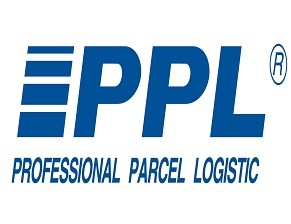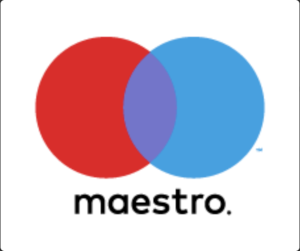 |  |  |
 |  |  |
 |  |  |
 |
Octopus NET SL M4 - Certified SAT>IP, Unicast & Mulitcast [MPTS] streaming server with 4 tuners for DVB-S2/C2/T2/ISDB-S/C/T/J.83B with optional Twin CI.
The Octopus NET SL series and its hardware is a SAT>IP 1.2.2 streaming server certified by SES Astra for your home network for use with RTSP compatible players and SAT>IP clients, which exist primarily as app, software or hardware clients. Likewise, the server is used for the distribution of DVB signals in professional installations and environments via RTP|UDP multicast as an IPTV headend. All you need is a compatible SAT>IP hardware client or software, e.g. in the form of an app or PC software. Even simple players that can process RTSP streaming, such as the well-known VLC® Player or powerful TV software such as DVBViewer® or VDR® can be used.
Proven technology in a new design
The SL series and the former V2 series use the same hardware components. The new chassis offers more flexibility and passive cooling of the server, even in difficult deployment environments. The Octopus NET mainboard, powered by a slim Linux OS with our open source SAT>IP service, delivers a stable streaming engine through a powerful FPGA processor. In this way it can be guaranteed that even with maximum usage of up to 12 streams there will be no degradation in relation to latency (stream delivery below 500ms).
A 5 port Gigabit switch is available for each server, so that additional devices can be added to your network. In addition, this switch can be used in multicast mode for controlled broadcasting of the streams (Stream on LAN Output), so that only certain ports let out certain streams.
Flexible, modular and exchangeable
Of course, your Octopus NET is equipped with Digital Devices tuners, so if at a later date you find that other tuners or a larger number of tuners are needed, you can easily exchange or replace the tuners of the server with a card of the "Max" series or "DuoFlex" series. This modular design allows you to remain flexible with regard to extensions, replacement of tuner hardware or conversion to other types of reception.
The tuners of Octopus NET SL M4
The tuners which powers your Octopus NET SL M4 server are simply multi-talented. The Octopus NET has 4 tuners which can be used for the following types of reception:
DVB-S (Satellite Tuner)
DVB-S2 (Satellite Tuner)
ISDB-S (satellite tuner)
DVB-C (cable tuner)
DVB-C2 (cable tuner)
ISDB-C (cable tuner)
J.83 Annex B (Cable Tuner)
DVB-T (Terrestrial Tuner)
DVB-T2 (Terrestrial Tuner)
ISDB-T (Terrestrial Tuner)
All DVB reception types, are specified in the SAT>IP protocol. For the reception types in e.g. the Japanese area (J.83 Annex B) or in areas as South American (ISDB), we have also created solutions for the these reception situations with our own extension based on the SAT>IP protocol.
Depending on the existing reception type, 4 tuners are available for this, which can be requested by your client. Since a client always informs the server in its request about the type of reception, one of the 4 tuners is started immediately, e.g. to provide a SAT signal. The three remaining free tuners can be started with the same reception type or with another one, if available. Thus also mix configuration over different reception types of up to 4 transponders are possible, without the investments in different receipt systems. If not only satellite but also cable TV is to be received at the location (e.g. for local stations), this is now easily possible with the Octopus NET SL M4. Reception modes that are not required can also be deactivated via the web interface.
For operation on a satellite system, you need with conventional "star-wiring" for each used DVB-S tuner a line to Octopus NET SL M4, so the card is fully DiSEqC capable. Likewise the use is problem-free possible at Unicable¹ I (EN50494) and Unicable II/JESS² (EN50607) systems. To supply the individual SAT tuners with Unicable, the SAT inputs of the card are connected to the Unicable system using a Unicable splitter.
For the operation at a cable connection or terrestrial antenna only one cable from the socket or antenna is necessary. The signal is distributed internally to the tuners, so no splitter is needed.
Unicast streaming with SAT>IP
With RTSP (Real Time Streaming Protocol), you can distribute the LiveTV signal in your local home network at home or, for example, in smaller hotels simply via LAN or WLAN, regardless of whether SD, HD or UHD. In unicast mode, the number of simultaneously usable clients is equal to the number of installed tuners. From simple media players with RTSP support to software products like DVBViewer® or SAT>IP Apps to hardware clients like Panasonic® TVs with integrated SAT>IP service (TV>IP). With the help of our OctopusCast software you can create M3U playlists in no time or distribute them via the integrated DMS server in the network to existing clients with media player function.
Multicast Streaming with SAT>IP
As a multicast streaming server via the RTP or UDP protocol, Octopus NET distributes the streams with MPTS technology. This makes it possible to stream one or more channels or even whole transponders with only one stream and tuner. MPTS compatible clients such as Panasonic® TVs can be supplied with a large number of channels in this way.
SAT>IP Server with CI Support³
(Note, only for the above selected variant "With CI Support" Item number: 292054)
As the only SAT>IP server available on the market with integrated CI support, encrypted streams can also be decrypted directly in the server in advance with certain software clients or any player compatible with RTSP, by an extended option in the RTSP request. Of course, in addition to server-side CI support, CI+ is also available on the client side, depending on the respective technical equipment of the used client.
*1 Unicable® Requirement: Unicable®/ SCR / CENELEC EN50494 compliant LNB or multiswitch according to EN50494
*2 JESS® Requirement: Jess®/ CENELEC EN50607 compliant LNB or multiswitch according to EN50607
*3 According to SAT>IP specification, there is no server-side CI support. The extension of Octopus NET servers with a CI slot, are a separate extension based on the SAT>IP protocol. This extension currently only works with software clients, where the manufacturers/developers have added a related integration in their software. A SAT>IP capable TV or SetTop Box (hardware clients) cannot handle the CI in Octopus NET so far. Decrypting multiple services from different transponders (MTD - Multi Transponder Decrypting) is not possible with Octopus NET systems. Decrypting multiple channels of one transponder (SDT - Single Transponder Decrypting) is possible in multicast mode. STD is technically possible for unicast operation, but there is no practical implementation for decrypting multiple services by the offered clients with CI support for Octopus NET. Basically, in unicast operation clients which support the CI of Octopus NET can request one service (channel) per tuner and CI slot for decryption. When using multiple CI slots / CA modules, multiple decryption is possible according to the number of used CIs. When using different decryption systems, there is no automatic assignment to the corresponding CA module, the assignment for different encryption methods over multiple CA modules, can usually be managed by the client.






